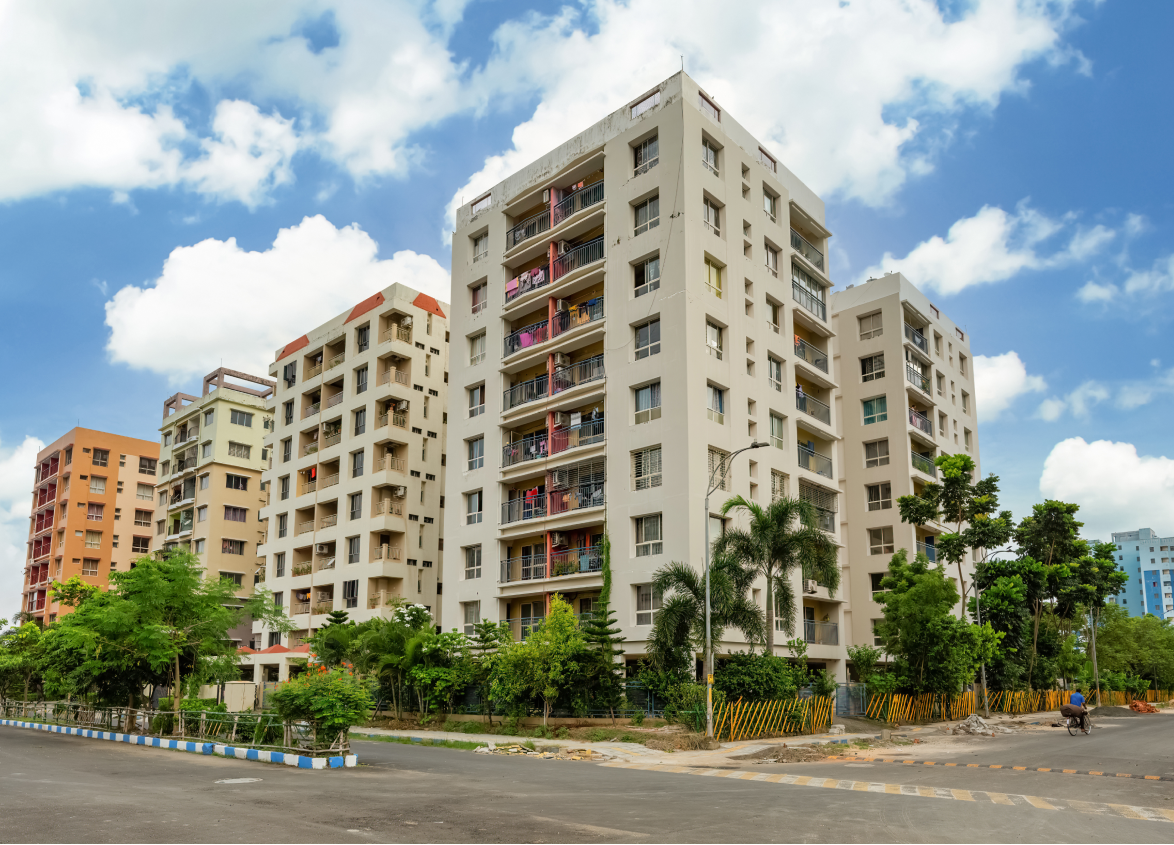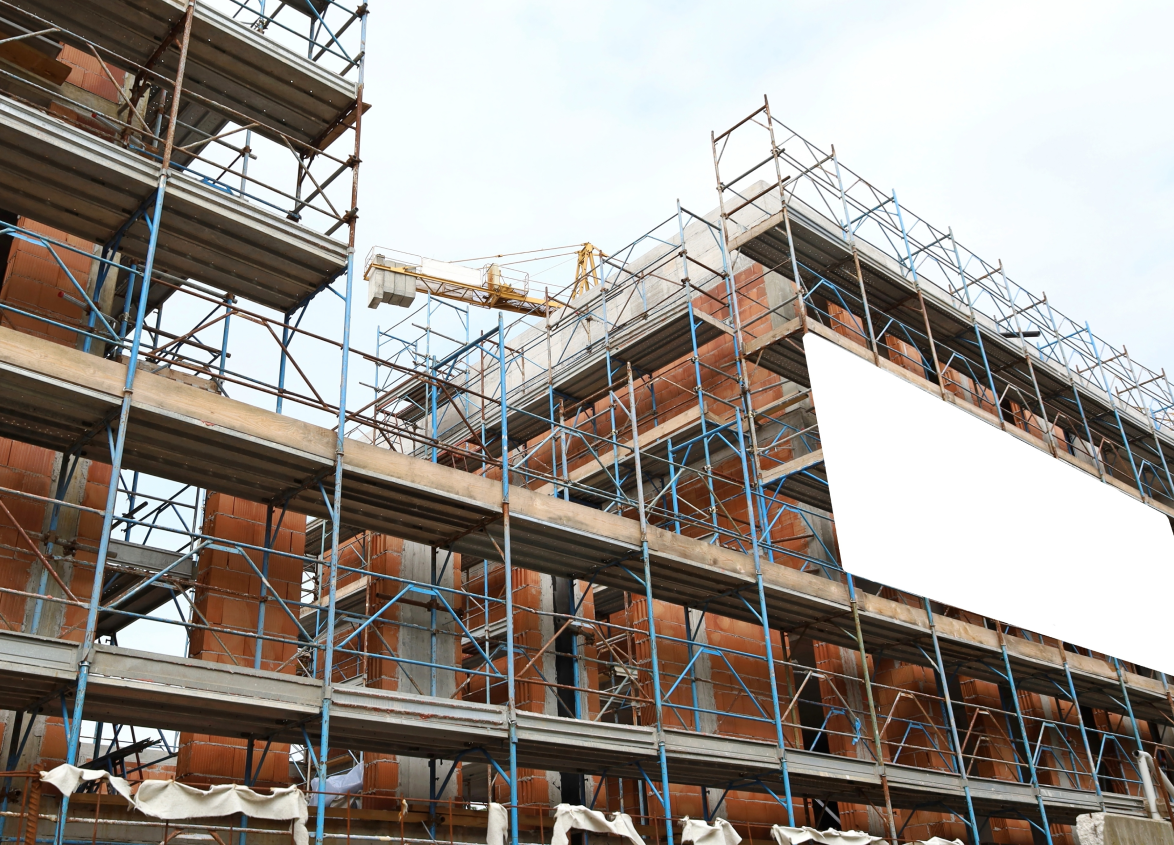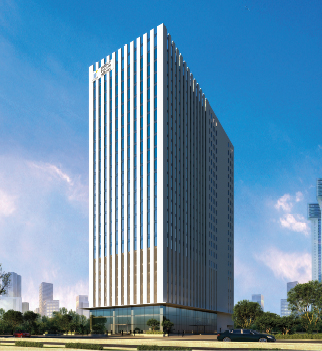
Residential
Ultimate Guide to Finding Properties with Lucrative Rental Income
April 16, 2025
Investing in rental income properties is one of the best methods of building long-term wealth and gaining financial independence. Unlike other forms of investment, rental income real estate gives an instant cash flow and long-term appreciation, which is why it has become one of the popular investment choices of many investors.
There has been great demand for high rental yield properties, largely due to urbanisation, growing population dynamics and increased migration to cities. Individuals interested in acquiring the best investment properties stand to reap rewards in steady passive income, capital gains, and tax advantages.
However, not all tenant units offer equal earnings and selecting the best property requires a clear and detailed understanding of rental yield calculation, location trends, and property management strategies.
Understanding Rental Income and Yield
Rental income real estate refers to earning income through properties on a rent or leasing basis, assuring continuous cash flow. One of the major determining components for the success of rental income properties is the calculation of rental yield, which measures the profit-making capacity of your investment.
Suggested Read - Pros & Cons of Buying vs Renting a Property
Through the analysis of gross and net rental yield, investors can compare properties and finally find the best rental properties for investment. This computation of investing in rental properties for beginners is important to make correct decisions and achieve their desired gains.
Definition of Rental Income and Rental Yield (Gross vs. Net Yield)
Rental income is the amount that a property owner receives from tenants renting their property.
Calculating such a lease is an important measure where the return on investment is from rental income properties. It is normally presented as a percentage and is in two types:
- Gross Rental Yield: Derived by dividing the rental income per annum by the cost of buying the property and multiplying by 100.
Gross Rental Yield (%) = (Annual Rental Income / Property Purchase Price) × 100
- Net Rental Yield: Takes into account all expenses associated with the property, providing a more accurate reflection of profitability.
Net Rental Yield (%) = [(Annual Rental Income - Annual Expenses) / Property Purchase Price] × 100
How Rental Yield is Calculated and Why It Matters for Investors
Rental yield calculation is necessary for measuring the viability of income earned from real estate investments. Higher rental yield denotes more money-making prospects with increased cash flow concerning the purchase price of the property.
Therefore, this allows investors to compare various properties to arrive at informed decisions. It's important to note that while high rental yield properties are attractive, they should be balanced with potential risks and market conditions.
Ideal Rental Yield Benchmarks for Different Property Types
Ideal rental yield benchmarks differ according to property types and locations:
- Residential Properties: A rental yield of 3% to 5% is generally considered healthy.
- Commercial Properties: These tend to provide higher rental yields, generally from 5% to 8%, due to the lengthy terms of leases and high rents.
- Co-Living Spaces: Coming up as a popular option, these can yield between 6% and 10%, depending on demand and management efficacy.
Investors should plan according to their rental income real estate strategy with these benchmarks to ensure reasonable returns.
Key Factors That Influence Rental Property Profitability
Several factors impact the profitability of rental income properties, including location, demand, property type, and market trends. Choosing the right property in the best cities for rental income in India may affect rental yield calculation and occupancy rates.
Moreover, by observing the real estate rental market trends, investors can always monitor upcoming hotspots and make informed investment choices. Legal and regulatory issues also find their way into providing a trouble-free experience.
Location: Proximity to Business Hubs, Schools, Transport, and Amenities
The site of a property significantly determines its rent income. Properties near business districts, reputable schools, public transportation, and other essential amenities usually attract tenants and command better rent.
Demand & Vacancy Rates: How Occupancy Levels Impact Returns
High demand and low vacancy rates indicate strong real estate rental market trends. Areas with an increasing population, available employment opportunities and little housing supply usually show high occupancy levels. Investors must study local vacancy rates to evaluate stability in potential rental income.
Property Type: Apartments, Villas, Commercial Spaces, Co-Living Spaces
The rental yield and tenant demographics, interlinked with the real estate rental market trends, depend on the type of property investment:
- Apartments: Frequently in demand in cities, providing stable rental income.
- Villas: Preferred by families requiring more space, possibly commanding higher rates and incurring increased maintenance expenses.
- Commercial Spaces: These can offer higher rental yields but with longer vacancy periods.
- Co-Living Spaces: Typically, on a flexible basis, these yields could potentially offer a greater per-unit rental yield for young professionals and students.
Market Trends: Rising Rental Demand in Metro Cities vs. Tier-2 Cities
The market trends in real estate are instrumental in assessing rental property profitability.
Metro cities usually have more demand for housing because of urbanisation and abundant economic growth opportunities. This results in greater rental income real estate prospects. On the contrary, tier-2 cities are becoming appealing investment destinations with lower property prices and competitive yields.
Investors should be aware of market dynamics to pick growth areas and take advantage of any shift in dynamics.
Legal & Regulatory Aspects: Rental Laws, Taxes and Government Incentives
Negotiating regulatory and legal frameworks is key to successful investing in rental properties for first-time investors. Familiarity with rental laws, tax liability, and any government-mandated incentives goes a long way toward ensuring compliance and enhanced profits.
Suggested Read - Property Tax : Types, Calculation and Payment
Some jurisdictions, for example, give tax breaks for investment in low-income housing, which increases returns.
Best Locations for Lucrative Rental Income
Spending money on rental income real estate requires extensive research to find the best cities for rental income in India. While metro cities like Mumbai, Bangalore, and Delhi offer strong rental demand, tier-2 cities are emerging as potential hotspots for high rental yield properties.
Investors must analyse the pros and cons of commercial rental hubs vs. residential rental markets, considering factors like vacancy rates, rental appreciation and tenant demand.
High-Demand Metro Cities
Investing in the best cities for rental income in India can considerably raise rental income. Metropolitan cities have always been the most sought-after rental income properties due to their population density, job opportunities, and strong infrastructure.
Considering that these cities have always experienced stable rental demand and price appreciation, some of the best rental properties for investment are to be found there.
| City | Key Rental Hubs | Reasons for High Rental Income |
|---|---|---|
| Bangalore | Whitefield, Electronic City, Sarjapur Road | Known as India’s IT hub, Bangalore has a massive influx of working professionals, making it one of the best cities for rental income in India. The presence of top universities also fuels demand for student housing, contributing to passive income through rental properties. |
| Mumbai | Bandra, Andheri, Lower Parel, Navi Mumbai, Thane | As India's financial capital, Mumbai has one of the most expensive real estate markets but also offers high rental income. Rental demand in Navi Mumbai and Thane is growing due to affordability and improved connectivity. |
| Delhi NCR (Gurgaon & Noida) | Gurgaon (Cyber City, Golf Course Road), Noida (Sector 150, Noida Extension) | Gurgaon and Noida are two major rental hotspots in the Delhi NCR region. Gurgaon, known for its corporate sector and MNC presence, attracts expats and professionals, making it a great location for rental income properties. With its growing IT and commercial sectors, Noida has seen a rise in demand for the best rental properties for investment. |
| Chennai | OMR (Old Mahabalipuram Road), Velachery, Porur | Chennai has a stable rental market driven by the automobile, IT and manufacturing industries. Areas like OMR, Velachery and Porur are in high demand for residential and commercial rental properties. |
| Hyderabad | Gachibowli, Hitech City, Madhapur | Due to its booming IT industry, Hyderabad has emerged as a preferred city for high-rental yield properties. Property prices remain relatively affordable compared to other metros, making it an attractive destination for investing in rental properties for beginners. |
Emerging Rental Hotspots in Tier-2 Cities
Tier-2 cities are rapidly developing, offering great potential for rental income properties. These cities have lower property prices than metros but provide decent rental yields due to rising employment and infrastructure developments.
| City | Key Rental Hubs | Reasons for High Rental Income |
|---|---|---|
| Pune | Hinjewadi, Kharadi, Wakad | Pune is a thriving educational and IT hub, making it one of the best cities for rental income in India. These areas see strong demand for rental income real estate. |
| Ahmedabad | SG Highway, Prahlad Nagar | With rapid industrialisation and business growth, Ahmedabad is becoming a promising location for rental income properties. SG Highway and Prahlad Nagar are popular for residential and commercial rental properties. |
| Jaipur | Mansarovar, Vaishali Nagar | Jaipur has seen a rise in corporate offices and educational institutions, increasing the demand for the best rental properties for investment. Areas like Mansarovar and Vaishali Nagar have good rental potential. |
| Indore | Vijay Nagar, Super Corridor | Indore’s IT and educational sectors are growing, making it a good choice for investing in rental properties for beginners. New developments like Vijay Nagar and Super Corridor have attracted rental demand. |
| Coimbatore | Saravanampatti, Peelamedu | Known for its industries and educational institutions, Coimbatore offers stable rental demand. Saravanampatti and Peelamedu are key rental hubs. |
Commercial Rental Hubs vs. Residential Rental Markets – Which is More Profitable?
Investors often debate between commercial and residential rental properties. Depending on market conditions, each has advantages and risks.
Residential Rental Markets
- Pros: Stable demand, lower investment costs, easier to manage.
- Cons: Lower rental yields (3-5%), tenant turnover can be frequent.
- Best for: New investors looking for steady passive income through rental properties.
Commercial Rental Hubs
- Pros: Higher rental yield calculation (5-8%), long-term leases, and corporate tenants ensure reliability.
- Cons: Requires higher initial investment, longer vacancy periods, and legal complexities.
- Best for: Experienced investors looking for high-value rental income real estate.
How to Identify High-Rental-Yield Properties
Finding the best rental properties for investment requires an in-depth analysis of rental yield, tenant demand and future appreciation potential. Investors need to assess real estate rental market trends, property maintenance costs and vacancy rates before making a decision. This section will provide actionable strategies for how to find lucrative rental properties.
1. Conduct Thorough Rental Yield Calculation
Before investing, it’s crucial to perform a rental yield calculation to determine the property's profitability. A rental yield above 5-6% is generally considered good for rental income real estate in residential markets, while commercial properties can offer even higher returns.
2. Analyse Local Demand and Vacancy Rates
A property in a high-demand area with low vacancy rates ensures steady rental income. Research tenant demographics, employment opportunities and infrastructure developments in the locality. The best cities for rental income in India are those with consistent tenant demand, such as metro hubs and tier-2 growth centres.
3. Assess Infrastructure and Connectivity
Proximity to business hubs, IT parks, educational institutions and public transport networks significantly boosts rental potential. Properties near metro stations, highways and commercial districts tend to have higher occupancy rates, making them the best rental properties for investment.
4. Compare Property Types for Better Returns
Not all properties yield the same returns. Assess whether commercial spaces, co-living spaces, apartments or villas are more profitable in a given location. Choosing the right type can maximise your passive income through rental properties.
5. Look for Government Incentives and Tax Benefits
Many state governments offer tax benefits and incentives for rental property investors. Checking for such benefits can improve your overall returns while reducing long-term costs.
Types of Properties That Generate High Rental Income
Not all properties offer the same rental returns. Some property types, such as commercial spaces, co-living apartments and villas, offer better rental yield calculations than others. This section breaks down the different types of rental income properties and how they contribute to profitability.
1. Residential Apartments
- Most common rental income real estate choice.
- Located in metro cities with high tenant demand.
- Ideal for families and working professionals.
- Rental yield calculation typically ranges between 3-5%.
2. Co-living and Student Housing
- It is increasingly popular due to rising demand from young professionals and students.
- Higher per-room rental yield than traditional apartments.
- Best suited for cities with universities, IT hubs and corporate offices.
- Offers passive income through rental properties with minimal vacancy.
3. Commercial Spaces (Shops, Offices, Warehouses)
- Generates high rental yield properties, often between 5-8%.
- Stable, long-term leases with corporate tenants.
- Higher investment but better appreciation potential.
- Ideal for business districts and growing commercial hubs.
4. Luxury Villas and Independent Houses
- Attracts high-net-worth tenants and expatriates.
- Preferred in suburban areas and gated communities.
- Rental income properties of this type require higher maintenance but offer premium rentals.
5. Retail Outlets and Shopping Complexes
- Highly profitable in prime commercial areas.
- Suitable for investors looking for long-term stable rental income real estate.
- Rents are often linked to sales percentages, offering dynamic returns.
Common Mistakes to Avoid When Investing in Rental Properties
Many investors make costly mistakes, such as ignoring market trends, underestimating expenses or selecting properties with low demand. This section outlines key pitfalls for beginners to avoid while investing in rental properties, helping you secure the most profitable opportunities.
1. Ignoring Rental Yield Calculation
Many investors overlook rental yield calculation, leading to overpayment for low-yield properties. Always compute gross and net rental yields before making a purchase.
2. Choosing the Wrong Location
A property in a low-demand area will struggle with high vacancy rates, reducing rental income real estate returns. Ensure the property is located in a high-demand rental market.
3. Underestimating Expenses and Maintenance Costs
Failing to account for repairs, property taxes, insurance and maintenance expenses can reduce profitability. Always factor in all costs when assessing how to find lucrative rental properties.
4. Not Researching Market Trends
Ignoring real estate rental market trends can result in investing in areas with declining demand. Stay updated on local property markets to identify the best rental properties for investment.
5. Overleveraging with High Loans
Taking on excessive debt for investment can be risky if rental income doesn’t cover EMIs. Maintain a balanced financial approach to avoid cash flow issues.
6. Poor Tenant Screening
Renting to unreliable tenants can lead to defaults, property damage and legal troubles. Always conduct background checks and verify tenant credentials.
7. Overlooking Legal and Tax Obligations
Failure to comply with rental laws, lease agreements and tax regulations can lead to legal complications. Ensure all documentation is in place for a hassle-free investment.
Conclusion
Investing in rental income real estate is a proven way to build wealth, but success requires careful planning and analysis. From understanding rental yield calculation to identifying high rental yield properties in the best cities for rental income in India, every step is crucial in ensuring maximum profitability.
By leveraging real estate rental market trends, choosing the right property type and avoiding common mistakes, investors can ensure stable passive income through rental properties. Whether you are a beginner or an experienced investor, focusing on the best rental properties for investment will help you achieve long-term financial growth.
With the right strategies, patience and market awareness, you can successfully navigate the rental income real estate landscape and build a portfolio that generates substantial wealth over time.
MUST READ
Looking for something specific?
We'd be delighted to help you.





























































































































































































































































































































































































